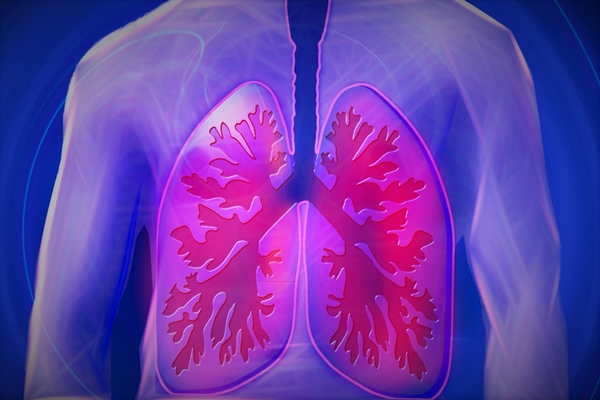25 Feb. 2022. A clinical trial is set to begin testing the safety and chemical activity of a drug candidate for lung fibrosis, discovered and refined with artificial intelligence. Insilico Medicine in Hong Kong says the early-stage or phase 1 trial testing Insilico’s experimental treatment known as ISM001-055 will enroll 80 healthy volunteers in New Zealand.
INS018_055 is Insilico’s first therapy designed entirely with the company’s A.I.-based drug discovery platform, also offered as a service to drug developers. As reported by Science & Enterprise a year ago, the company uses deep learning, a form of machine learning that finds underlying patterns in relationships, and builds those relationships into knowledge bases. Insilico says it then applies an A.I. technique called a generative adversarial network using two sets of algorithms that test each other while learning the underlying patterns. Those repeated rounds test the authenticity of new data generated by the model, eventually producing optimized data points.
Insilico combines these techniques in its deep learning target discovery system called PandaOmics that analyzes gene, transcription, protein, and clinical data sets. The company says it focused this technology to discover a new treatment for idiopathic pulmonary fibrosis, or IPF, a progressive lung disease usually affecting people between the ages of 50 and 70. The disorder results in fibrosis or scar tissue building up in the lungs, limiting the ability of lungs to transfer oxygen to the blood stream. The scarring of lung tissue increases over time, often leading to other serious lung conditions, including lung cancer and blood clots. Most patients die within five years after diagnosis.
Discovery and preclinical in 18 months
Insilico then called on its Chemistry42 system for drug molecule design. The company says Chemistry42 builds molecules from scratch, creating and testing chemical structures that meet the target’s properties and binding characteristics. The system also responds to needs for specified drug properties, such as molecule complexity or shape, metabolic stability, and solubility.
For Insilico’s IPF target, the system needed to design a safe oral drug meeting specifications for availability in the body, selectivity, and stability, resulting in a small molecule drug candidate first code-named INS018_055, now called ISM001-055. The company reported preclinical tests in lab animals showed no toxic effects after 14 days, as well as less fibrosis and improved lung functions. The entire drug discovery and preclinical development process, says Insilico, took 18 months.
“Modern deep learning technologies,” says Insilico Medicine founder and CEO Alex Zhavoronkov in a company statement released through Cision, “enable us to perform target identification using longitudinal biological data from healthy subjects and make inferences into a variety of diseases. This was the guiding principle for our anti-fibrotic program starting with identifying targets that may play a role in both aging and disease.”
Insilico says it already conducted a preliminary micro-dose assessment of ISM001-055 safety with a small group of human testers. The new clinical trial will enroll 80 healthy adults in Christchurch, New Zealand divided into 10 groups. Five groups of participants will take a single varying dose of ISM001-055 or a placebo, while another five groups will take multiple varying doses of the drug, or a placebo, all for 10 days. The study team will track participants for 12 months looking primarily for signs of adverse effects. The team is also tracking chemical activity in the body, responses of various organs and functions, and T-cell responses in the immune system.
More from Science & Enterprise:
- Challenge Seeks A.I. Antibody Enhancement Platform
- Synthetic SARS-CoV-2 Particle Designed for Drug R&D
- Start-Up to Discover Proteins for Difficult Drug Targets
- Sanofi Partners in $5.3B Precision Drug Discovery Deal
- AI Pharma Company Raises $15M in Early Funds
We designed Science & Enterprise for busy readers including investors, researchers, entrepreneurs, and students. Except for a narrow cookies and privacy strip for first-time visitors, we have no pop-ups blocking the page, nor distracting animated GIF graphics. If you want to subscribe for daily email alerts, you can do that here, or find the link in the upper left-hand corner of the desktop page. The site is free, with no paywall. But, of course, donations are gratefully accepted.
* * *


 RSS - Posts
RSS - Posts
You must be logged in to post a comment.